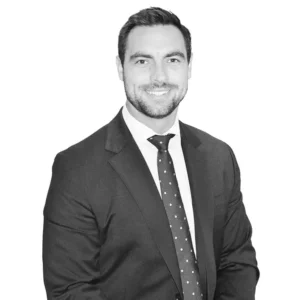Don’t Come Up Short
A few weeks ago, I wrote an article called Spending Matters Most, and I homed in on the fact that an accurate spending figure is key to creating a sound financial plan. In the intro, I told some funny stories about how I hate wasting food, and how my goal is always to have no leftovers.
The problem with the no-leftover rule is that it’s quite embarrassing if you come up short at a dinner party (see story on my son’s first birthday). In the realm of financial planning, often, the primary concern is that one would NOT outlive their nest egg. Some savers joke about bouncing their last check on the invoice of their funeral. Like my Dad always used to say on the golf course, you should never leave a putt short.
Here’s the reality, though, if you build that sound financial plan, there WILL be leftovers. So much of the financial planning media focus on not running out of money, and it seems like we have very little discussion about what exactly to do with those leftovers.
Breaking Good Habits
I’ve said it time and time again, it is hard to break bad habits, and it is also hard to break good habits. Many savers have a tough time transitioning to being spenders, and their thrifty nature carries into retirement. All of this leads to more… leftovers.
Sure, you can find a lot of literature on legacy aspirations, estate planning, and where wealth goes when your tour of duty is done, but I am more interested in discussing how you allocate these “future leftovers” during your lifetime. I remember a whole sermon on “the dash.” The pastor talked about how your tombstone would read two dates – your birth and your death –, but your entire life was represented by that separating dash. Today, I would like to talk about the importance of planning what to do with those leftovers within that dash.
The 4% Rule
Let me be more specific.
Much of the financial planning world was built on the 4% rule. This is all based on some work William Bengen did years ago, where he concluded 4% was/is a sustainable, safe withdrawal rate. Whether you agree with this conclusion or not, it is commonly applied throughout the field of financial planning or some semblance of it. So, let’s assume an investor has $5 million of investment assets and they are withdrawing 4% per year. For this rough illustration, we will assume that all of these withdrawals are coming from dividends and interest, so there will be less of a concern about a sequence of returns risk. Our fictitious investor retired at 60 and will live to be 84. Over the next 24 years, our investor does not touch the principal, just the 4% income, and the portfolio also appreciates 3% per year on top of that income. Based on history, these are all reasonable assumptions. The rule of 72 tells us that this 3% appreciation over 24 years will double the value of that nest egg. Our investor dies with $10 million of investment assets, in addition to the value of their belongings and real estate. These are the leftovers.
Dreamstorming
Here’s my question, with the right planning, could that investor have allocated those “leftovers” differently? Could there have been discussions about the investor’s passions and interests to see if they could’ve enjoyed those resources a bit more during their lifetime? Don’t misunderstand me, I’m not simply talking about them spending more – although that could be part of it – I’m talking about them planting the seeds of their legacy while they are still around to watch those seeds grow and flourish.
For some, this is a family lake house that will be passed down from generation to generation. For others, this is a family education fund that will cover education expenses for multiple generations. Then there are charitable goals, annual family retreats/vacations, and the list goes on. These types of financial aspirations are very personal and tailored to each investor. We arrive at these goals via dreamstorming; intentional conversations with your advisor about what’s important to you and how your money can be a resource to that particular passion.
This is planning. But not planning to make sure you don’t run out of money and not planning about who you will leave your wealth to, which are both important. Rather, this is planning for the financial dreams that you didn’t think possible. We have to be creative, thoughtful, and intentional; we have to think outside the traditional framework of financial planning here.
On this Side of Heaven
Most financial plans that I run at our firm show a high probability that a sizable nest egg will be passed down to the next generation and/or charities. My question is simply this, would you prefer to bestow some of those gifts now and watch the fruit it bears from this side of Heaven? I think the answer for many is “Yes!” Yet, the conversation is rarely had.
Ask yourself, does your base case financial plan end with a sizable nest egg to be passed down? If so, have you ever tried to challenge the financial plan with dream goals you’ve maybe been scared to consider? Or maybe aspirations you’ve yet to even dream up? As Jim Collins likes to call them, BHAGs (Big Hairy Audacious Goals).
Break the Plan
Here’s the hard part, each of you reading this article has your own unique riddle. I can’t give broad brushstroke advice because your goals and your financial plan are unique to you. To solve your riddle, it all starts with a dialogue. Open-ended questions for your advisor regarding the health and trajectory of your wealth. Again, from my perspective, you should try to break your financial plan, at least on paper. I imagine it like those paper towel commercials where they add one marble at a time to a damp paper towel to show the strength of their product. You should continue to add one marble (financial goal) to your financial plan until it eventually breaks and you have a clear understanding of the capacity of your wealth. Prioritize your dream goals and add them to the plan one at a time.
I’m sure this sounds like crazy advice, but I’d argue the crazier thing is how light the goal burden is on most plans. Savers work hard to accumulate and grow their wealth. It takes work ethic, time, and diligence. These efforts should be rewarded with the opportunity to both sow and reap during one’s lifetime. To watch a grandchild walk the graduation stage with a degree that you helped financially support, or to enjoy the 7th anniversary of a family trip that includes three generations of your family, or to help fund the new reading center at your local community center. Again, these goals come in all different shapes and sizes; the treasure hunt is to pinpoint what animates and fulfills you.
This is what planning for the dash looks like.





